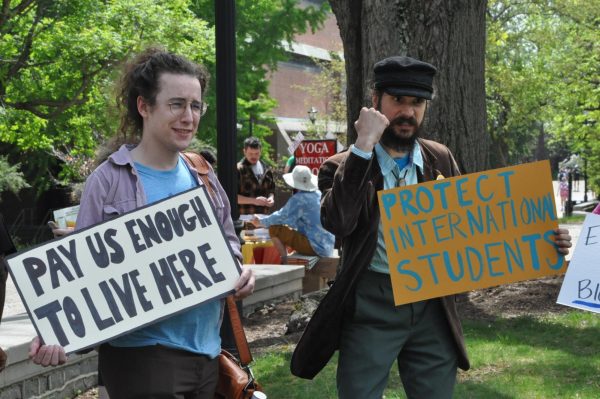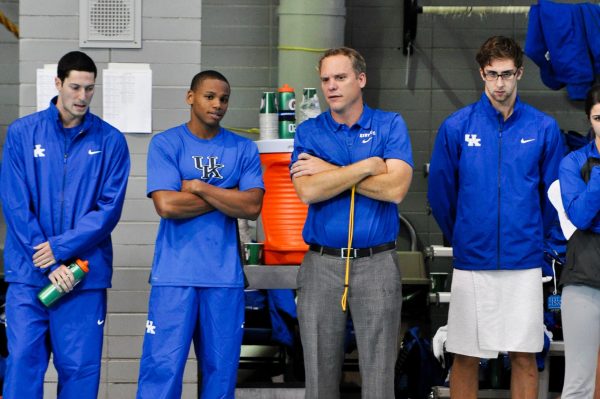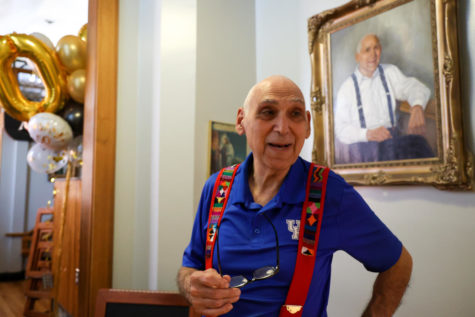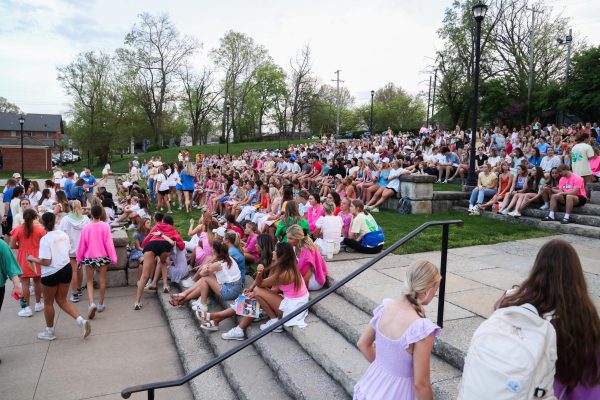Section of lights on Cats Path unreliable
April 9, 2008
Students who stay on campus for class or studying into the night may find their walk home darker than usual along one section of the Cats Path, which was created to provide a safe, well-lit and patrolled walk across campus at night.
Rainfall most likely caused a stretch of lights a few hundred feet long on the Cats Path around Memorial Hall to go out even though they were replaced last week, said Lance Broeking, director of finances for campus services.
Broeking received a call March 31 from a UK employee about lights on the path that were not working.
A physical plant employee fixed the lights, Broeking said, but by Sunday night, the same lights were out again.
Something is tricking the breaker on the circuit, he said, and until physical plant employees discover the cause, the Cats Path around Memorial Hall may continue to be dark at night.
“It could be a million different things that are causing the problem,†Broeking said.
But the most probable cause is recent rainfall, he said.
“Due to all the rain, moisture’s getting into the junction box and causing the trip,†Broeking said. “By the time they (physical plant employees) go out there, the water’s dried up.â€
The Cats Path was one of the safety features added to campus after the Center for Research on Violence Against Women published its first Women’s Safety Study in 2004. The study revealed that only 16.4 percent of women said they felt “very safe†on UK’s campus.
“We learned from the women’s safety study not only were there incidents of victimization on this campus, but there were women who did not feel safe on this campus,†said Carol Jordan, the director of the center.
On April 28, 2006, Todd publicly unveiled the Cats Path, which was prioritized for lighting and landscape improvements, and patrols by UK police.
“We wanted to make sure that instead of just sprinkling it around campus, we wanted to focus our resources on areas that were heavily traveled by students,†Broeking said.
Memorial Hall was one of the buildings along the path targeted for additional lighting, according to the 2006 report.
“You can tell by that circuit being out (behind Memorial Hall), you can see the dramatic difference and the dramatic improvements that have been caused by some of those resources,†Broeking said.
When the Women’s Safety Study was conducted again in 2007, women’s perceptions of campus safety had improved. Those women who felt “very safe†nearly doubled from 16.4 percent in 2004, to 31.7 percent, according to the 2007 Women’s Safety Study: Report to President.
Lighting increases a feeling of safety for women and for anyone else on campus, Jordan said.
Maj. Joe Monroe, UK’s interim police chief, said police conduct lighting checks about once a month. The department rarely has enough personnel to assign someone to patrol the Cats Path, Monroe said. Usually officers divert from another patrol to visit campus, he said.
A second phase of the Cats Path is in the works, Broeking said, and he is hoping it will be complete by Fall 2008.























































































































































